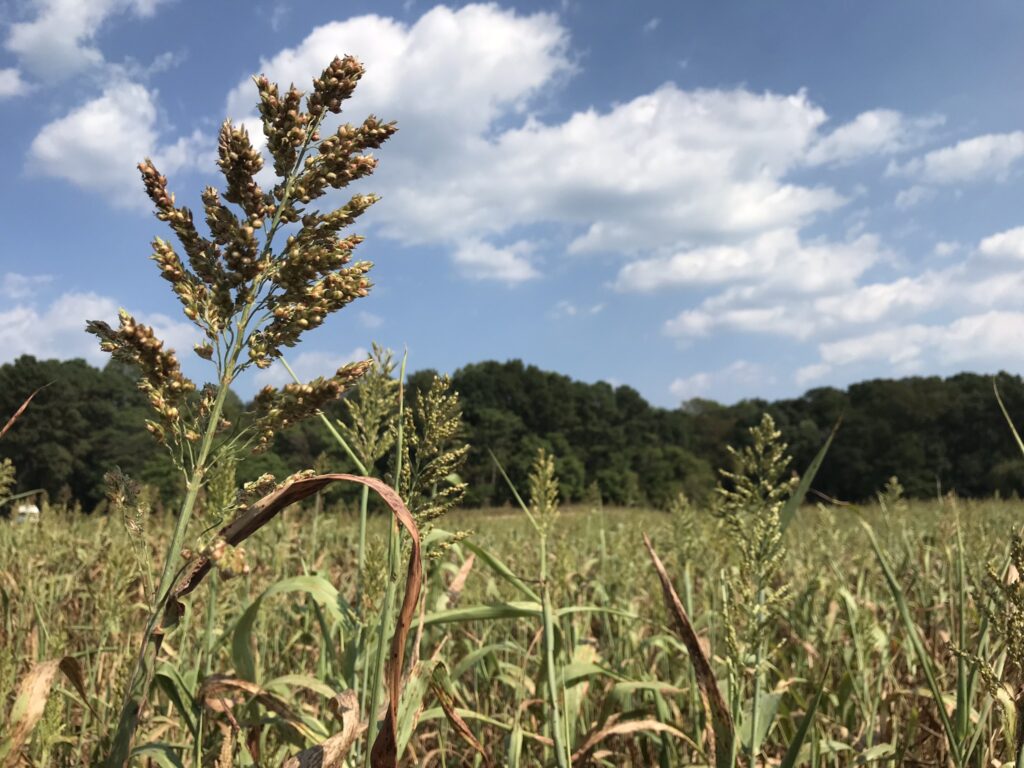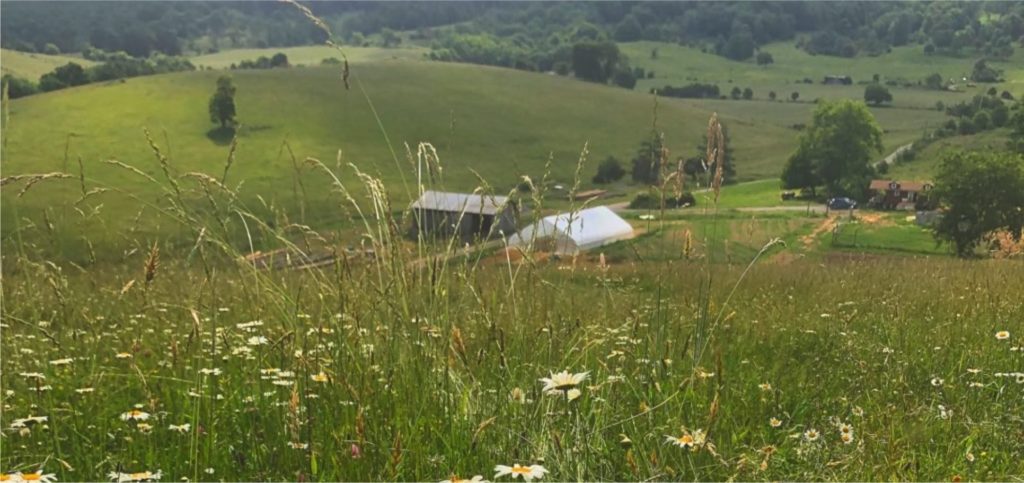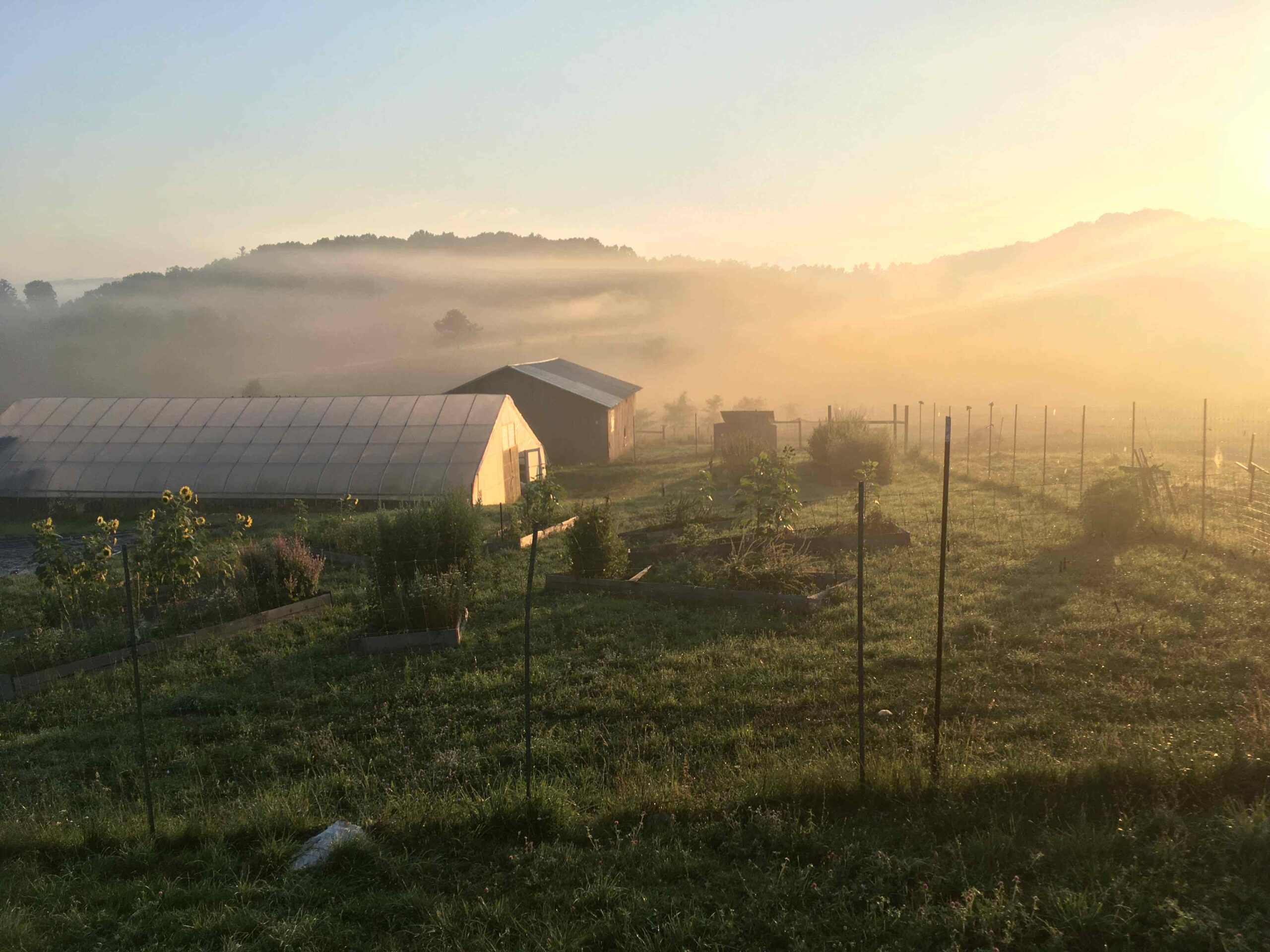The Work we are going about is this, To dig up Georges-Hill and the waste Ground thereabouts, and to Sow Corn, and to eat our bread together by the sweat of our brows. And the First Reason is this, That we may work in righteousness, and lay the Foundation of making the Earth a Common Treasury for All, both Rich and Poor, That every one that is born in the land, may be fed by the Earth his Mother that brought him forth, according to the Reason that rules in the Creation.
– Gerrard Winstanley, “The True Levellers Standard Advanced” 1664
Poster from 1975 film Winstanley
In April 1649, a small group of craftspeople, preachers, and peasants dug their shovels into the sides of St. George Hill, reclaiming land they believed had been stolen from the English commons by the landowning elite. Although they referred to themselves as the True Levellers, this act earned them the name, still well known today—the Diggers. Their leader, Gerrard Winstanley, was a prolific writer and incisive social thinker, who skewered the English landowners and ruling class and called for the creation of an expanded commons capable of feeding the rapidly expanding English population.
Over three hundred years before the founding of Agrarian Trust, Gerard Winstanley and the Diggers championed a compelling alternative to the early capitalism of the seventeenth century.
Winstanley’s writing and the actions of the Diggers are still surprisingly resonant today, as organizations like Agrarian Trust seek to counteract the ongoing process of displacement and destruction of land in the United States. Such historical examples of commoning practices and resistance to land enclosures not only provide ample opportunity to learn from past struggles, but also serve as proof that, rather than being a static relic of the past, the commons are continuously defended and transformed in the struggle against the exploitative and dehumanizing forces of enclosure. Agrarian Trust and similar grassroots organizations are part of this long lineage of commoners fighting for a more equitable and ecologically oriented relationship with the land. Over three hundred years before the founding of Agrarian Trust, Gerard Winstanley and the Diggers championed a compelling alternative to the early capitalism of the seventeenth century. Their platform centered on the democratic control of land and the restorative power of a simple but often overlooked fertilizing agent—manure.

Enclosure, Commons, and Manure
The Diggers climbed St. George Hill for the first time against the background of a nation in the midst of a dramatic transformation. In his historical survey of the English Revolution, The World Turned Upside Down: Radical Ideas During the English Revolution, the historian Christopher Hill paints a bleak picture of mass poverty and displacement from the land, as bands of itinerant laborers roamed the countryside and urban centers in search of work and sustenance. The economic shift from a feudal to early capitalist society, along with a rapidly growing population, caused landlords to economize and “cut down their households; the quest for profit led to the eviction of some tenants from their holdings, the buying out of others” (Hill 40). Through tactics such as extortive rents, unpayable debts, and outright violence, small-scale farmers were being driven off their land at an unprecedented rate. In addition to this process of mass displacement, the sudden arrival of immense quantities of stolen gold from the Americas, coupled with the repression of organized labor, caused a sudden spike in prices and devaluation of wages (Federici 71). Many displaced people sought refuge in the remaining commons, mainly wetlands, forests, and hill country, and survived by cultivating the already heavily depleted land, and by feeding on acorns, roots, and berries.
The English ruling class was faced with a volatilized working class. One of the popular solutions to the crisis of a rapidly growing, underfed population was to enclose the remaining commons, an act that many saw as a means of encouraging responsible land usage by private owners while forcing those who made a living off the commons to enter into the growing urban workforce. In 1610, King James I “suggested that the House of Commons should take action against the multitudes of cottages on waste grounds and commons, especially in forests, which were ‘nursuries and receptacles of thieves, rogues and beggars” (Hill 50). Others connected the enclosure of the commons more explicitly to the creation of a new labor force, claiming enclosure would give working class people “an interest in toiling, whom terror never yet could travail to endure” (50). The progressive displacement of people from their land was in this way part of a broader effort to bring laborers into the workforce, and to undermine the economic independence that accompanied access to commonly owned land. It was in response to this mounting threat of enclosure that Gerrard Winstanley and the Diggers aimed to create a viable response to the mounting crisis of poverty and population growth.
Gerrard Winstanley advanced a conception of human equality which he rooted in a radical interpretation of the Bible. He lambasted the arbitrary nature of landlord and nobility control of the land, arguing that their power was rooted in might, rather than right. The land should instead, he believed, be owned in common, as human equality necessarily entailed equal access to the land. Following the English Revolution, Winstanley argued, “the custom by which the lords of manor claimed property rights in the commons,” preventing them from being cultivated by impoverished farmers. This custom “should have been abolished by the overthrow of kingly power” (Hill 129). He extended this line of thought to the enclosure of the church’s land during the Protestant Reformation a century before, arguing that the church’s former lands should be transferred into a new commons. The extent of inequality in control of the land was so widespread that Winstanley claimed “half to two-thirds of English land was not cultivated.” With proper care, he believed, these lands could feed the starving English populace.
Winstanley and the Diggers were not only arguing for the return of stolen land to the commons, but also for the revival of the land through good growing practices.
Care for the land was at the center of Winstanley’s platform. While those in support of enclosure argued that privatization would encourage proper care for the land while increasing the productivity of England’s workforce, Winstanley saw humanity’s proper role as stewards of the land. “Manuring,” writes Christopher Hill, “is the crucial word in Winstanley’s programme” (130). Winstanley and the Diggers were not only arguing for the return of stolen land to the commons, but also for the revival of the land through good growing practices. They grew crops of beans, carrots, and parsnips, which allowed them to keep cattle through the winter and fertilize their land, a practice which would revolutionize agriculture in the seventeenth century (130). These concrete forms of land tenure were connected to the Diggers’ broader understanding of morality and freedom.
For the Diggers, the ability of an individual to keep and manure land was an essential aspect of a moral society: “True religion and undefiled is to let everyone quietly have earth to manure” (130). Similarly, he held that access to land and one’s own sustenance was an important component of a free society: “True freedom lies where a man receives his nourishment and preservation, that is in the use of the earth… A man had better have nobody than to have no food for it” (134). In other words, the commons were, for the Diggers, the material foundation of a more just and free society.

The Diggers Today
The Diggers ultimately failed to institute their vision and were driven off their land under threat of violence from the state and private landowners. Yet the Diggers platform was not as fanciful as it might seem. Christopher Hill, a historian with the advantage of hindsight, points out that their vision of an expanded commons “could have fed the expanding English population without disrupting the traditional way of life to anything like the extent of what happened” (130). It is evident that we are confronted today with a similar crossroads.
On the one hand, we can choose to allow the process of enclosure to continue unchecked, as corporations and industrialized agriculture continue to extract and benefit from shared resources such as soil, water, and air. On the other hand, we can continue the struggle started by the Diggers on St. George Hill, by defending the commons and articulating alternative forms of land tenure that ensure the long-term health and independence of the land and the communities that live on it. The parallels between the Diggers world and our own are striking. Across the country and the world, small farmers are being driven off the land by exorbitant land prices, unmanageable debt, and outright violence. Meanwhile, our soil is being depleted by monoculture and industrial farming techniques that favor profit over sustainability. The fate of England, Winstanley believed, lay in the Diggers’ ability to organize “us that are called common people to manure and work upon the common lands” (129). It is clear today that Winstanley’s words still ring out with a resounding urgency, as they call us forward to defend the commons and work toward a more just and equitable relationship with the land.
Check out Gerrard Winstanley’s protest ballad “The Digger’s Song,” performed by Chumbawamba with additional verses by Leon Rosselson: Chumbawamba – The Diggers’ Song
Further Reading
Winstanley, Gerrard. “The True Levellers Standard Advanced: Or, The State of Community Opened, and Presented to the Sons of Men,” 1649. https://www.marxists.org/reference/archive/winstanley/1649/levellers-standard.htm.
Hill, Christopher. The World Turned Upside Down: Radical Ideas during the English Revolution. New York: Penguin Books, 1972.
Federici, Silvia. Caliban and the Witch: Women, the Body and Primitive Accumulation. Brooklyn, NY: Autonomedia, 2004.





